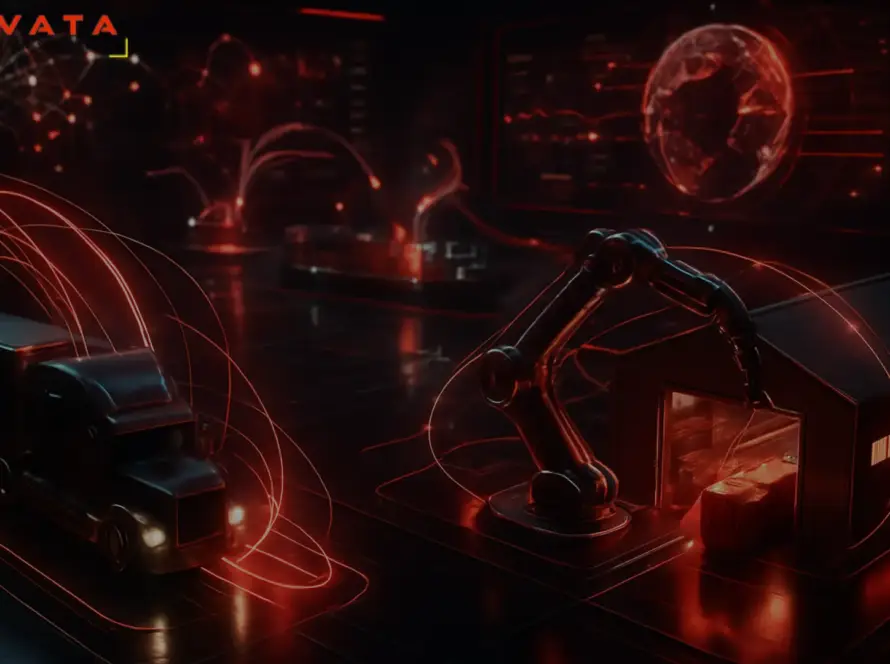Ayush Agrawal is the co-founder of Intugine, a logistics technology company solving one of the biggest challenges in Indian supply chains—visibility. An IIT Kharagpur graduate, Aayush started out building gesture-based wearables, but pivoted to logistics after discovering major technology gaps in logistics.
Under his leadership, Intugine has grown into a multimodal visibility platform serving manufacturers, 3PLs, e-commerce and quick commerce players across India.
Q: From engineering to logistics—how did the shift happen?
Ayush: Logistics wasn’t our first plan. My co-founder and I started with a wearable tech product that controlled devices via hand gestures and voice commands. After three years, we realized the market wasn’t ready. It was during the 2013–2015 period, and the product was too early for its time.
Since we had strengths in IoT, we explored its use in various sectors and found a major technological gap in the logistics industry. That’s where our journey in logistics began.
Q: How does Intugine solve visibility problems for manufacturers?
Ayush: A manufacturer typically takes vehicles from 50+ transporters if not more, and most of these transporters take vehicles further from brokers/fleet owners. In this case, it becomes almost impossible for manufacturers to get visibility on one single platform. We need alternate tracking methods to solve for visibility. Depending on their operations and use case, we provide one amongst our 6 methods of visibility: Some of the modes of tracking are::
- SIM tracking: We integrated with all telecom operators in India. With the driver’s consent, we track their location using cell tower data.
- Existing GPS integrations: We collaborate with more than 100+ India’s GPS solution providers and OEMs to get GPS data from vehicles that already have the devices installed.
- FASTag/Toll data: We’ve integrated with ULIP to track vehicles through FASTag data
Our platform is used not just for manufacturers for FTLs but also for PTL/Courier shipments, where we have integrated with 600+ parcel service providers.
Subscribe to Growth Hub for more in-depth industry leader interviews.
Q: One major issue today is delayed payments to transporters. What’s your take?
Ayush: Transporter margins are already tight—most operate on loans, and the average payment cycle is 60–90 days at best, which squeezes margins further. Let me break it down:
📆 Jan 1:
A consignment goes out for delivery.
📆 Jan 4:
The consignment reaches the destination.
📆 Jan 8:
Goods get unloaded (typically takes 2–3 days).
The driver now receives a physical copy of the POD.
📆 Jan 8–28:
The driver continues delivering to other cities and may take at least 20 days to return to the transporter’s office to hand over the POD.
📆 Jan 28–Feb 4:
The transporter collects 50–100 such PODs and prepares a consolidated invoice.
📆 Feb 4–Feb 14:
The manufacturer manually verifies and approves the invoices.
This is often delayed due to unclear, handwritten PODs that have traveled across the country.
📆 Feb 14: March 7:
Once approved the payment takes at least two weeks to get processed depending on the company’s policies.
Digitization of PODs is the need of the hour. We need more companies to adopt it.
Q: What are the other key challenges in the industry right now?
Ayush: Underutilization of vehicles is a major challenge.
Trucks in India spend, on average, 24–48 hours idle while waiting for loads. They typically operate only 18–20 days a month, with the rest of the time spent idling or searching for loads.
Bad roads, traffic bottlenecks, and frequent breakdowns reduce effective driving hours. The average distance covered by a long-haul truck is 300-350 kms a day, compared to 700-800 kms a day in developed countries.
There’s also a driver shortage. Long hours and poor working conditions make driver retention very difficult.
Q: Lastly, what advice would you give to young professionals entering supply chain?
Ayush: Don’t chase fancy tech for its own sake. Focus on solving real, everyday problems. Supply chain may seem unsexy, but it’s full of high-impact opportunities—especially if you listen to what people on the ground are saying.



